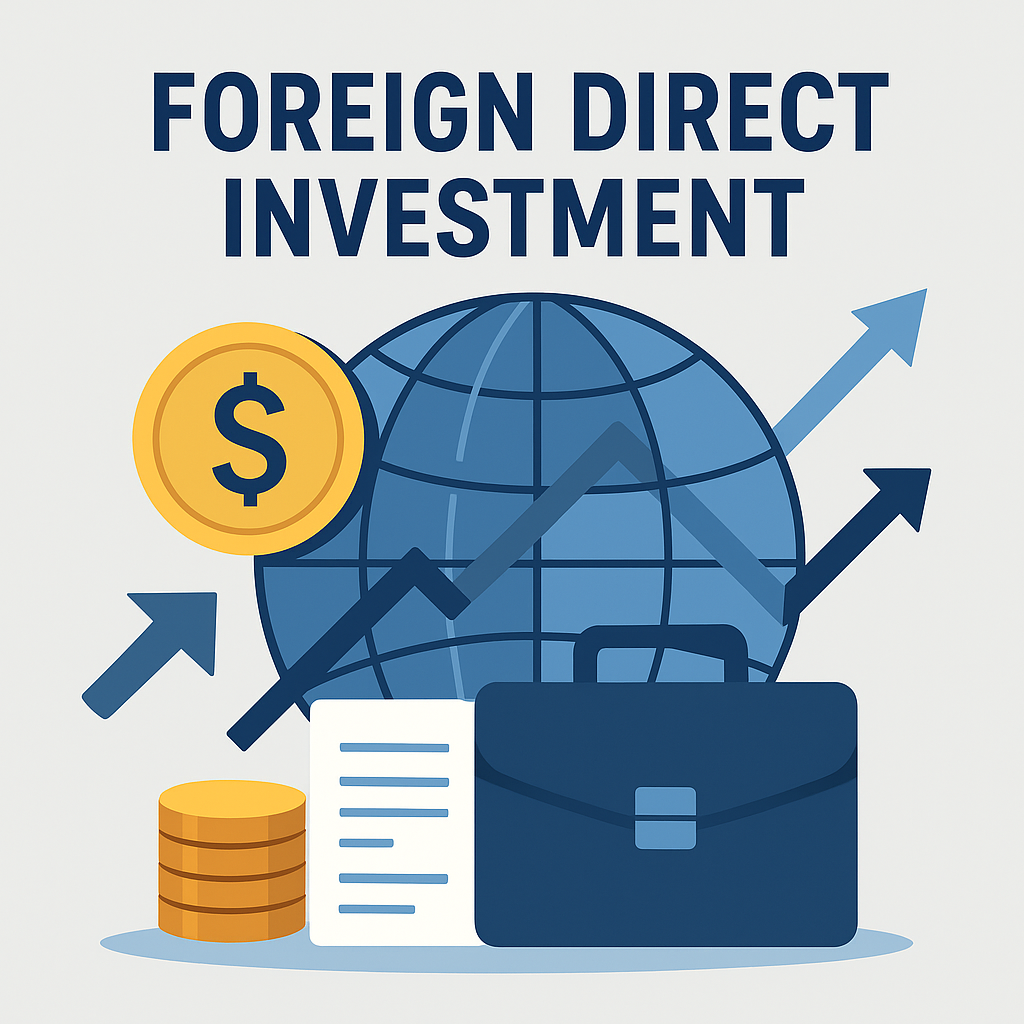
The 2024 foreign direct investment (FDI) in Africa reached historic levels while creating substantial business prospects for the future.
FDI in Africa reached its highest point in decades during 2024 because the continent received $97 billion in foreign capital inflows. The combination of large-scale projects together with progressive policy changes and increasing demand for digital infrastructure and renewable energy sources drove this investment expansion. The positive investment statistics hide multiple promising prospects together with critical obstacles that need resolution. The following analysis examines the recent FDI developments and identifies top recipient nations and explains why Africa has become the focus of worldwide interest.
Africa’s FDI Surge: The Big Picture
The United Nations Conference on Trade and Development (UNCTAD) reports that Africa received its highest-ever foreign direct investment total of $97 billion during 2024 which represented a 75% increase from previous years. The percentage of global FDI that Africa received increased from 4% to 6% during this period.
The Ras El-Hekma megacity project in Egypt received funding from the UAE-based ADQ sovereign wealth fund which served as the main driver for this growth. The investment growth in Africa reached 12% during 2024 even when excluding the impact of major projects.
Global investors now recognize Africa as a leading destination for building infrastructure and developing technology and green energy systems beyond its traditional role as a resource extraction center.
Regional Winners: Where the Money Went
1. North Africa Leads the Charge
North African countries received more than half of the total FDI that entered the continent during 2024.
The Ras El-Hekma project in Egypt brought in $46-47 billion to the country which became the main source of its FDI inflows. Morocco and Tunisia received substantial foreign investments for their renewable energy initiatives and logistics development. The region has established itself as a central location for energy transition initiatives which enable African nations to support European climate change initiatives.
2. Sub-Saharan Africa Shows Steady Growth
The FDI inflows into Sub-Saharan Africa maintained a steady pace during 2024 because of investments in mining operations and energy projects and agricultural businesses.
Country FDI Received (2024) Key Sectors
- Ethiopia $4.0B Logistics, industrial parks, digital services
- Côte d’Ivoire $3.8B Agribusiness, urban infrastructure, energy
- Mozambique $3.55B Natural gas, LNG, infrastructure
- Uganda $2.7B Oil, gas, and renewable energy
- Namibia $2.4B Green hydrogen, wind energy
Sectors Driving the Boom
1. Renewable Energy
The total investment in solar power and wind energy and hydroelectric projects reached $17 billion in Tunisia, Namibia, Morocco and Egypt. The extensive renewable energy resources of Africa draw investors who focus on environmental sustainability.
2. Infrastructure & Urbanization
The construction of urban mega-projects like Ras El-Hekma represents a new urban development trend which focuses on tourism development and housing construction and logistics infrastructure. Foreign investors from China and Gulf states continue to fund railway development and port construction and road infrastructure improvement.
3. Digital Transformation
The establishment of technology hubs in Kenya, Nigeria and Egypt has attracted substantial funding for data center construction and development of fintech solutions and e-commerce platforms. Digital infrastructure now holds the same strategic value as conventional power systems and transportation networks.
Major Deals to Watch
The following are some of the most significant investment agreements that took place during 2024.
- The Egyptian government launched the $35 billion-plus Ras El-Hekma megacity development which includes tourism facilities and free trade areas and a new tourism center.
- The Nigerian government received $1.2 billion from Chinese investors to improve gas processing facilities and increase export capabilities.
- The China-Chad-Senegal partnership includes multiple agreements that focus on electricity generation and water management and agricultural development and information and communication technology advancement.
- EU-backed renewable projects in Namibia aim to establish the country as a future green energy exporting nation through their large-scale development.
Challenges Ahead: Not All That Glitters is Gold
The record-breaking year of 2024 did not eliminate the fundamental obstacles which threaten to limit future African economic expansion.
1. Over-Reliance on Mega-Projects
The Ras El-Hekma project in Egypt generated more than 40% of the total FDI inflows during 2024. Yet, the growth of foreign direct investment remains unstable because the country lacks sufficient mid-sized and small-scale projects. This gives the investors to come in with foreign contractors and repatriate profit back home reducing drastically the local content impact on the local ecosystem.
2. Political & Regulatory Risks
The stability of investments depends on currency stability and legal system strength and absence of corruption. The political instability of certain nations prevents them from drawing sustainable foreign direct investment.
Final thoughts
The current situation presents investors with an unprecedented business opportunity. The situation enables African countries to create their destiny through improved negotiations which will drive innovation while making sure national growth delivers advantages to domestic populations instead of foreign businesses.
